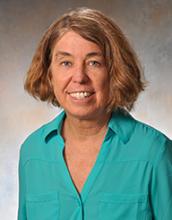The Department of Applied Mathematics is pleased to host this series of colloquium lectures, funded in part by a generous gift from the Boeing Company. This series will bring to campus prominent applied mathematicians from around the world.
Speaker: Mary Silber, University of Chicago
Date: November 2, 2017, 4pm, reception to follow
Location: (SMI 205)
Title: Two tales of pattern formation: Michael Faraday's crispations and Alan Turing's spots
Abstract: Using two case studies, this talk will describe the role of symmetry-breaking bifurcations in pattern formation. Faraday waves are standing waves that form on the surface of a fluid that is subjected to a vibration. These wave patterns can take on a wide variety of beautiful forms, the nature of which depend on the frequency content of the periodic forcing function. Turing patterns were proposed in the setting of reaction-diffusion systems, and they involve a simple mechanism that is often invoked to explain the appearance of regularly spaced spot and stripe patterns that arise naturally in the environment. I will describe the application of this modeling framework to investigations of large-scale vegetation patterns in dryland ecosystems.
